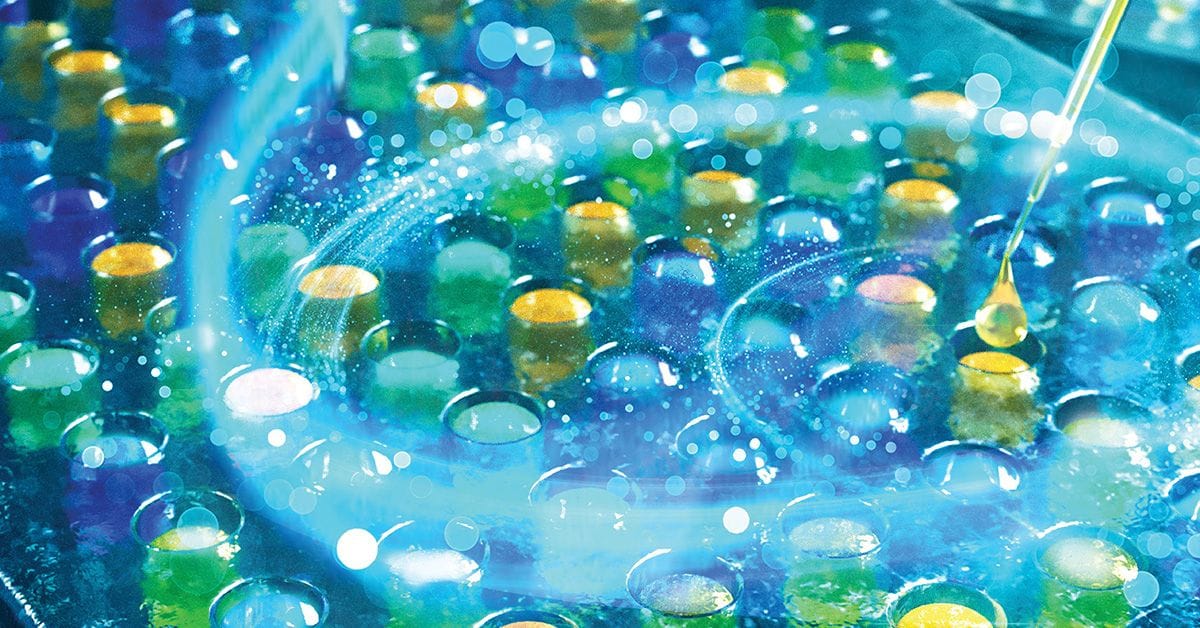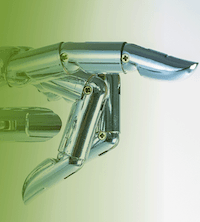According to new research published in Analytical Chemistry, tongue depressors are getting a makeover. These traditional wooden tools could be used to evaluate patient health by measuring biomarkers in saliva. Read on to learn more about this study and other new advances in biosensing.

Tongue depressors are typically made of birchwood—a renewable and biodegradable material, but not one known for its ability to conduct electricity. However, chemists are working on innovative ways to add conductive patterns, and this research could open a new chapter in sustainable sensors and non-invasive health testing.
In the past, attempts at achieving electrical conductivity in wood have been based on using the wood as a passive substrate for surface coatings of metals or carbon-based inks.1,3 As an alternative, some scientists have explored laser-induced graphene (LIG) as a means of using high-powered lasers to convert wood into a carbon-based nanomaterial that can perform as an active conductive substrate. LIG has an array of remarkable properties, including high surface area, electrical and thermal conductivity, and easy fabrication and patterning.2 This method is also attractive because it can be achieved in a single step without the need for any additional chemicals. However, during the LIG process, the wood surface undergoes significant thermal degradation and decomposition, which would make it unsuitable for a medical use—and complex, time-consuming methods are required to reduce damage to the wood during the high-powered laser treatment.3
An emerging alternative relies on lasers with lower power and less potential for damage. In a recent study published in Analytical Chemistry, researchers at the University of Athens, Greece, report for the first time on the fabrication of a wood-based electrochemical biosensor using LIG with a low-power and low-cost diode laser.3 The team used a portable laser to engrave graphite electrodes on a wooden tongue depressor, and the resulting electrodes formed two electrochemical cells separated by lines drawn with a water-repellent marker pen.
When tested, the biosensor was able to quickly and simultaneously measure concentrations of nitrite and glucose in artificial saliva. These two biomarkers are significant in healthcare settings; nitrite can reveal oral diseases such as periodontitis, and glucose serves as a diagnostic for diabetes. This novel LIG process requires easily available and cheap tools, and it can be carried out under ambient conditions without any special reagents, allowing for repeatability at point-of-care in a fast and affordable way.3
Prior research from the same team has explored similar low-cost “DIY” sensors in other settings. For example, their work published in 2022 demonstrates a wearable 3D-printed “e-finger” that could detect adulteration of alcoholic beverages with date-rape drugs or analgesics—the latter a growing issue in low-quality alcoholic drinks, intended to minimize next-day hangovers in unsuspecting victims. The device consists of three carbon plastic electrodes printed from a conductive polylactic acid filament and integrated on a finger-shaped holder printed from nonconductive thermoplastic polyurethane. Each e-finger takes about nine minutes to print, and the cost of materials is only $0.19. When dipped into liquid samples, it can analyze and display the results in real time via smartphone.4 This process was also used to develop another 3D-printed device for self-monitoring glucose levels in sweat.5
The simple procedures adopted in these research projects overcome the disadvantages of manufacturing technologies used in existing biosensors. These low-cost devices have great potential to be easily adapted to detect other biomarkers, and they could allow for quick and cost-efficient production both on-site at medical facilities and in the home for self-monitoring.
References
- Fu, Q. et al. Wood-Based Flexible Electronics. ACS Nano 2020, 14, 3, 3528–3538.
- Dixit, N. and Singh, S. P. Laser-Induced Graphene (LIG) as a Smart and Sustainable Material to Restrain Pandemics and Endemics: A Perspective. ACS Omega 2022, 7, 6, 5112–5130.
- Koukouviti, E. et al. Wooden Tongue Depressor Multiplex Saliva Biosensor Fabricated via Diode Laser Engraving. Anal. Chem. 2023, 95, 17, 6765–6768.
- Poulladofonou, G. et al. Wearable Electronic Finger for Date Rape Drugs Screening/ From “Do-It-Yourself” Fabrication to Self-Testing. Anal. Chem. 2022, 94, 9, 4087–4094.
- Katseli, V. et al. Smartphone-Addressable 3D-Printed Electrochemical Ring for Nonenzymatic Self-Monitoring of Glucose in Human Sweat. Anal. Chem. 2021, 93, 7, 3331–3336.

